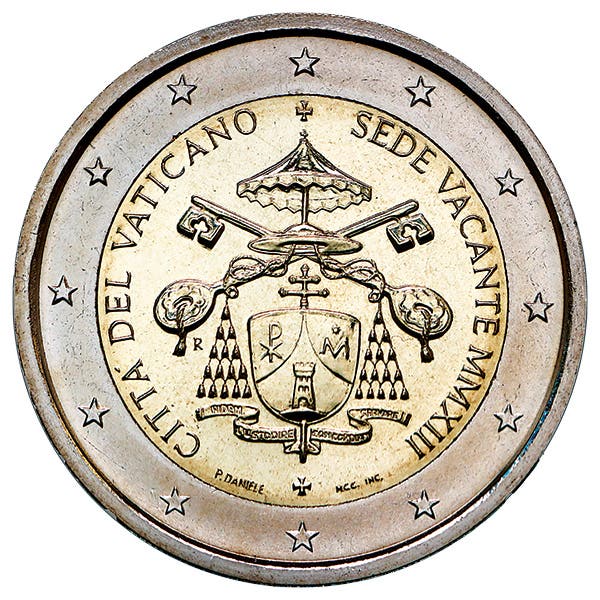Cultural Heritage Crime Minimal
The headline of a July 31, 2018 Forbes magazine article read: “Rampant Antiquities Theft Threatens Cultural Heritage Around the World.” The article addressed Europol’s Pandora III operation cracking down on…
The headline of a July 31, 2018 Forbes magazine article read: “Rampant Antiquities Theft Threatens Cultural Heritage Around the World.” The article addressed Europol’s Pandora III operation cracking down on the illegal antiquities trade. According to the article, “The operation resulted in the arrest of 59 individuals and the recovery of more than 18,000 cultural objects, including Greek and Roman coins, a 15th-century Bible, and a Mesopotamian crystal cylinder seal.”
Just how much of a problem is the trade in illicit coins and other items of cultural value? One of the main arguments for the repatriation of antiquities, including coins, to the country of origin is due to the black- market trade in these objects.
While some countries want these objects returned to their place of discovery using the argument the objects are cultural patrimony, there is also the argument that trade in such objects is financing terrorism.
The argument that illicit trade in ancient coins and artifacts raided from museums and archaeological sites with the intent of financing terrorism has been questioned. The 2019 annual report on transnational crime recently released by the World Customs Organization sheds light on just how little or how much impact the black- market trade in coins and other objects has become.
The short answer is that despite the illicit trade in antiquities and coins being accused of being a multi-billion-dollar industry, only overshadowed by the sale of drugs and arms, statistics appear to argue this simply isn’t true. The World Customs Organization’s recently released 200-page Illicit Trade Report indicates 0.2 percent of Customs Enforcement Network investigations and seizures for the year 2017, 0.08 percent in 2018, and 0.2 percent in 2019 involved cultural property. This statistic includes a single seizure of more than 10,000 coins during 2018. The WCO has been assessing cultural heritage as a category for the past five years.
According to the report, there were 102,214 cases investigated by Customs officials during 2019. Only 227, or 0.22 percent, of these cases involved cultural heritage. Drug cases numbered 36,264 or 35.5 percent. There were more than 26,000 alcohol- and tobacco-related investigations, and more than 28,000 investigations involving drugs.
Neither Syria nor Iraq were identified as being a major source of cultural property problems in the report. The number of countries reporting cultural heritage cases rose from 23 to 34 in 2018. The largest portion of cultural property seized, however, involved coins, bank notes, and medals. In 2019 5,141 of the 9,399 items seized could be termed as being numismatic.
The single largest cultural heritage seizure was a find of 3,963 Byzantine coins valued at €289,418 or $324,148 discovered in Croatia hidden in a car registered in Turkey. This seizure represented 31.5 percent of all cultural heritage property seizures for 2019.
According to the report, there were 15 incidents within the United States involving cultural heritage during 2019. The “top eight” countries were reported to be Russian Federation, Ukraine, Cyprus, Cuba, Chile, Peru, the United Arab Emirates, and Saudi Arabia. These eight countries represented 80 percent of all cases. The Russian Federation reported 133 of the 227 total cases reported. Accompanying statistics indicated most investigations are grouped in Eastern and Central Europe, as well as in the Commonwealth of Independent States in Eurasia, South America, and the Caribbean.
Many of the 2019 seizures could be termed as minor. One seizure involved seven coins and three spoons, two others involved 20 and 11 coins, while yet another involved what was described as three gold coins with a total weight of 16 grams. A 2019 seizure of Mesopotamian artifacts at Heathrow Airport in England originating from Bahrain turned out to be forgeries.
While the report indicates the number of investigations involving coins and cultural property appears to be trivial, this doesn’t suggest there isn’t some problem. In July an individual was arrested in Drama, Greece in the illegal possession of 5,533 Byzantine and Ottoman period coins as well as 69 additional Hellenistic objects.
During September, New York antiquities dealer Fortuna Fine Arts Ltd. was closed when the owners were arrested for falsify- ing provenance records supporting claims the artifacts being sold in the shop had been previously owned by a deceased collector. Perhaps dead men can tell tales?








